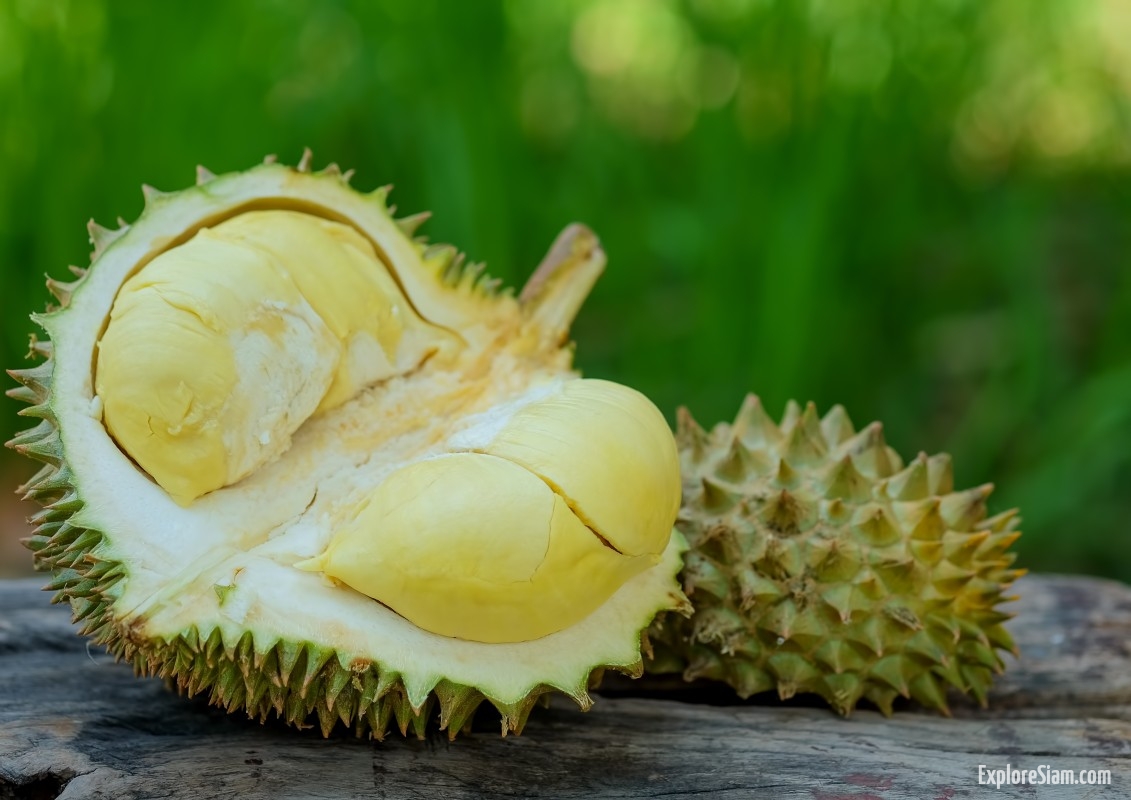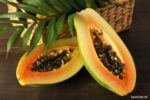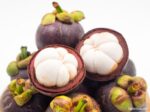Durian, often dubbed the “King of Fruits”, is a tropical delicacy that evokes intense reactions from those who encounter it. Found primarily in Southeast Asia, this fruit is as notorious for its pungent odor as it is celebrated for its unique, rich flavor. Despite its polarizing nature, durian remains a beloved staple in many cultures, revered for its nutritional benefits and culinary versatility.
A Distinctive Aroma
The first thing most people notice about durian is its smell. Descriptions range from “overripe cheese” and “turpentine” to “raw sewage”. The odor is so potent that it’s banned in many hotels and public transportation systems across Southeast Asia. However, for durian enthusiasts, the smell is an integral part of the fruit’s allure. The aroma, they argue, hints at the complex and creamy flavors hidden within the thorny husk. This distinctive scent is produced by a combination of sulfur compounds, which are also found in onions and garlic, and contribute to durian’s polarizing nature.
While some find the smell offensive and unbearable, others have grown to appreciate its unique, pungent character. The aroma of durian can permeate entire markets, drawing both curious newcomers and seasoned aficionados. For many, the initial encounter with durian’s smell is a rite of passage, an introduction to a fruit that embodies the bold and exotic flavors of Southeast Asia. It’s not uncommon to see durian vendors proudly displaying their wares, the air thick with the fruit’s unmistakable scent, as they invite passersby to experience the “King of Fruits” for themselves.
An Exotic Taste
Cutting open a durian reveals a creamy, custard-like flesh that can be pale yellow, golden, or even reddish, depending on the variety. The taste is an intricate blend of sweet and savory, with notes of almond, caramel, and a slight bitterness. It’s a flavor that’s difficult to compare to any other fruit, contributing to its enigmatic reputation. Some describe it as a mix between banana and mango with a hint of garlic, while others simply say it’s an acquired taste. The texture, too, is unique: smooth and velvety, with a richness that lingers on the palate.
Each bite of durian offers a complex interplay of flavors, from the initial sweetness that gives way to subtle savory undertones, to the slight astringency that adds depth to the overall taste. This complexity is what makes durian such a fascinating and divisive fruit. For those who love it, durian is a delicacy that offers an unparalleled sensory experience, one that combines taste, smell, and texture in a way that no other fruit can.
Moreover, the taste of durian can vary significantly depending on the variety and ripeness. Some varieties are milder and more palatable to beginners, while others, like the infamous Musang King, are intensely flavorful and beloved by durian connoisseurs. This diversity in taste and texture makes durian a fruit that continues to surprise and delight those who are willing to explore its many nuances.
Cultural Significance
In countries like Thailand, Malaysia, and Indonesia, durian is more than just a fruit; it’s a cultural icon. Festivals celebrate the durian harvest, and entire markets are dedicated to its sale. In Malaysia, for instance, the annual Durian Festival attracts tourists from around the world eager to sample different varieties and learn about the fruit’s cultivation. Durian even finds its way into folklore and traditional medicine, believed to possess warming properties that can balance the body’s internal temperature.
Durian’s cultural significance extends beyond its culinary uses. It is often featured in art, literature, and media, symbolizing abundance, prosperity, and the rich cultural heritage of Southeast Asia. In Thailand, durian is referred to as the “King of Fruits,” a title that reflects its esteemed status and the reverence with which it is regarded. This cultural reverence is evident in the meticulous care that goes into cultivating durian trees, which can take several years to bear fruit. Farmers tend to their durian orchards with dedication, ensuring that each fruit reaches its full potential in flavor and quality.
The fruit also plays a role in social and family gatherings, where sharing a durian is seen as a bonding experience. In many communities, the arrival of durian season is eagerly anticipated, and families come together to enjoy the fruit and celebrate its unique qualities. This cultural practice underscores the deep connection between durian and the social fabric of Southeast Asian societies, where the fruit is more than just a food item; it is a symbol of tradition, community, and shared heritage.
Culinary Uses
Beyond being eaten fresh, durian is a versatile ingredient in Southeast Asian cuisine. It’s used in a variety of dishes, from savory to sweet. Durian paste is a common filling for pastries, while durian ice cream and candies are popular treats. In some regions, durian is even cooked into curries or paired with sticky rice, creating a decadent dessert that balances the fruit’s richness with the subtle sweetness of the rice.
The versatility of durian in the kitchen is a testament to its unique flavor profile, which can enhance a wide range of dishes. In Malaysia and Indonesia, durian is often used in traditional desserts such as “dodol” and “lempok,” where its creamy texture and rich taste add depth and complexity. In Thailand, durian is a popular ingredient in “khao niao durian,” a beloved dessert that combines the fruit with sticky rice and coconut milk, creating a harmonious blend of flavors and textures.
Durian’s culinary uses are not limited to traditional dishes. In recent years, innovative chefs have experimented with incorporating durian into modern and fusion cuisine, creating unique dishes that highlight the fruit’s distinctive qualities. Durian cheesecakes, smoothies, and even savory dishes like durian pizza have gained popularity, showcasing the fruit’s potential to surprise and delight in new and unexpected ways.
The culinary appeal of durian extends to its potential health benefits. Rich in vitamins, minerals, and antioxidants, durian is a nutritious addition to any diet. Its high fiber content aids digestion, while its natural sugars provide a quick energy boost. For those who can appreciate its bold flavors, durian offers a delicious and healthful way to experience the culinary heritage of Southeast Asia.
Nutritional Benefits
Durian is also prized for its nutritional profile. It’s rich in fiber, vitamin C, potassium, and healthy fats. The fruit’s high energy content makes it a valuable food source in tropical climates. Additionally, durian contains tryptophan, an amino acid that helps produce serotonin, which can improve mood and promote better sleep. The fiber in durian aids in digestion, helping to maintain a healthy gut and prevent constipation. It also contributes to a feeling of fullness, which can be beneficial for those trying to manage their weight.
Durian is packed with antioxidants, such as vitamin C, which help to protect the body against free radicals and reduce inflammation. This can aid in preventing chronic diseases and supporting overall immune health. The potassium content in durian helps to regulate blood pressure and support cardiovascular health, while the healthy fats provide a source of energy and are essential for brain function.
Moreover, durian is a good source of essential minerals such as iron, magnesium, and copper. Iron is crucial for the formation of red blood cells and preventing anemia, while magnesium supports muscle and nerve function. Copper plays a role in maintaining healthy bones and connective tissues. Durian also contains B vitamins, which are important for energy production and maintaining a healthy nervous system.
The fruit’s natural sugars provide a quick energy boost, making it a great option for athletes or those in need of a quick pick-me-up. Despite its high calorie content, durian’s nutritional benefits make it a valuable addition to a balanced diet when consumed in moderation. For those who can appreciate its bold flavors, durian offers a delicious and healthful way to experience the culinary heritage of Southeast Asia.
The Controversy
Despite its many admirers, durian remains one of the most controversial fruits. The strong odor can be off-putting, and its rich, fatty flesh can be overwhelming to those unaccustomed to its taste. Critics argue that the fruit is simply too pungent and too rich to be enjoyable, while fans insist that its complex flavor and creamy texture are worth the initial sensory shock.
The divisiveness of durian is often a topic of heated debate. Those who dislike durian frequently describe the smell as unbearable, comparing it to rotting onions or gym socks. This intense odor is due to volatile sulfur compounds, which can be overwhelming in enclosed spaces. The texture of the fruit, which can be creamy and custard-like, is also a point of contention. Some people find it too rich and oily, making it difficult to consume in large quantities.
On the other hand, durian enthusiasts passionately defend the fruit, highlighting its unique taste and health benefits. They argue that the initial sensory shock is part of the experience and that the complex flavor profile is unmatched by any other fruit. For many, the enjoyment of durian is a deeply personal and cultural experience, one that evokes memories of family gatherings and local festivals.
The controversy surrounding durian also extends to its presence in public spaces. Due to its strong odor, many hotels, airports, and public transportation systems in Southeast Asia have banned the fruit, adding to its notorious reputation. Despite these challenges, the fruit continues to be a beloved delicacy for many, symbolizing the rich and diverse culinary traditions of the region.
A Growing Global Presence
In recent years, durian’s fame has spread beyond Southeast Asia. Export markets in China, the United States, and Europe have grown, driven by the curiosity of adventurous eaters and the dedication of expatriate communities longing for a taste of home. Specialty stores and online retailers now offer fresh and frozen durian, allowing more people to experience the fruit that has captivated Southeast Asia for centuries.
The growing global presence of durian is a testament to its unique appeal and the increasing interest in exotic fruits. In China, durian has become a highly sought-after luxury item, with high prices reflecting its status as a delicacy. The fruit is often given as a gift during festive seasons, symbolizing wealth and good fortune. In the United States and Europe, durian is gaining popularity among food enthusiasts and chefs who are eager to experiment with its distinctive flavor in various culinary creations.
The expansion of durian markets has also led to innovations in packaging and transportation. Advanced freezing techniques allow the fruit to be preserved and shipped across long distances without compromising its quality. This has made it possible for more people to enjoy durian in regions where it was previously unavailable. Additionally, the rise of social media has played a significant role in popularizing durian, with influencers and food bloggers sharing their experiences and introducing the fruit to a wider audience.
However, the global demand for durian has also raised concerns about sustainability and the environmental impact of large-scale cultivation. Deforestation and the loss of biodiversity are potential risks associated with the expansion of durian plantations. As the fruit continues to gain popularity, it is crucial to address these issues and promote sustainable farming practices to ensure that durian can be enjoyed by future generations.
Durian is a fruit that embodies the essence of culinary adventure. Its powerful aroma and unique taste create a sensory experience unlike any other, challenging eaters to look beyond first impressions. For those willing to embrace its bold characteristics, durian offers a journey into the heart of Southeast Asian culture and cuisine. Whether you find yourself among its passionate advocates or its detractors, one thing is certain: durian is a fruit that leaves a lasting impression, dividing opinions and delighting those who fall under its spell.
The enduring appeal of durian lies in its ability to evoke strong emotions and create memorable experiences. It is a fruit that transcends mere taste, offering a glimpse into the rich cultural heritage and diverse culinary traditions of Southeast Asia. For many, the enjoyment of durian is not just about the fruit itself, but the shared moments and connections it fosters. As durian continues to make its mark on the global stage, it remains a symbol of the adventurous spirit and the enduring love for bold and unique flavors.





